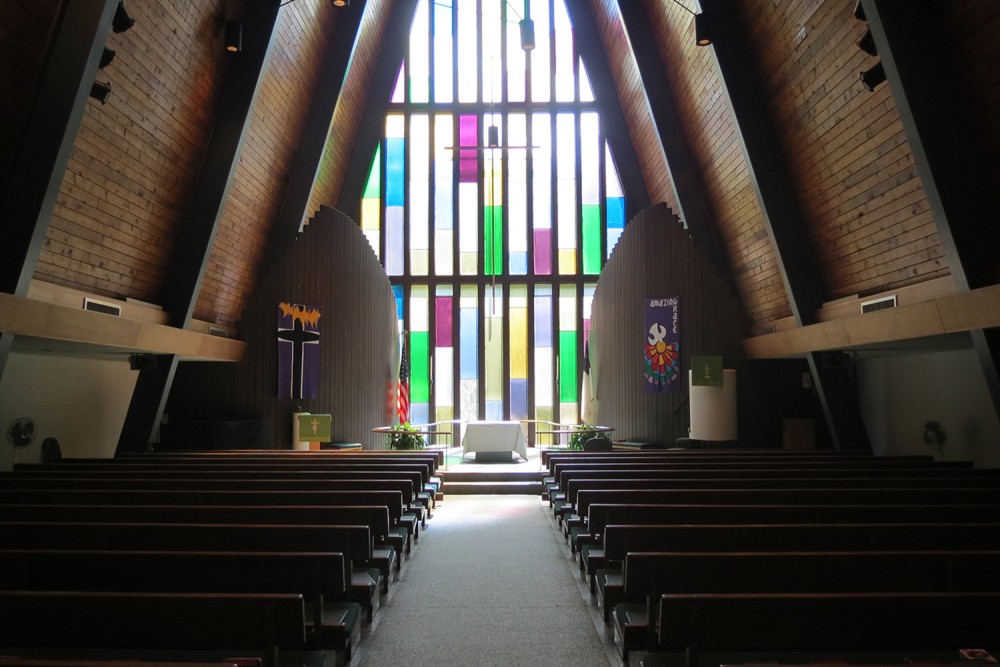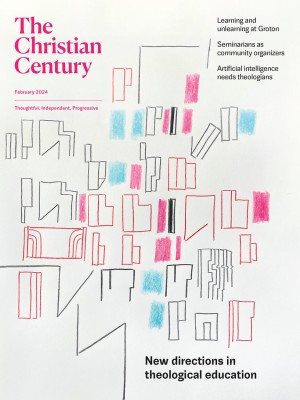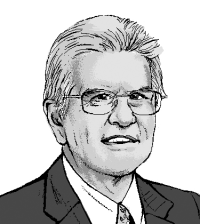A landscape of lost denominations
In the US, church foundation stones tell a mostly forgotten story of religious and ethnic history.

Built in 1967 in State College, Pennsylvania, the Park Forest Evangelical United Brethren Church is now the Park Forest Village United Methodist Church. (Photo used by permission)
When the pandemic stranded my wife and me in Central Pennsylvania, we spent some time exploring the area’s many small towns and villages. We focused on historic churches, and we paid close attention to their foundation stones. These told an informative story—not just about religious history but about the country’s ethnic, linguistic, and immigration history. Taken together, those limited geographical observations raise questions about our larger religious futures.
Until the mid-20th century, the US Protestant landscape was ethnically diverse in ways that might surprise us today. Several major churches were rooted in European ethnic traditions, and these were strong across the Midwest as well as the East. Over time, changes in language and immigration led to assimilation, so that these denominations stood out less. By the 1960s, most were amicably absorbed into one of the great mainline churches. In most cases, older identities were largely forgotten by nonspecialists, and certainly by most ordinary church members. Today, it is mainly genealogists who pay attention to those older memories.
Read our latest issue or browse back issues.
As a case in point, a suburban development in State College, Pennsylvania, has a United Methodist church with modernist architecture that unmistakably proclaims a late 1960s aesthetic. It was built in 1967 as one of the last new churches constructed by the once significant Evangelical United Brethren Church. The name traces back to the great revivals that swept colonial America. Two of the greatest preachers of the later 18th century were German counterparts of John Wesley and George Whitefield: Philip William Otterbein (from a Reformed background) and Martin Boehm (Mennonite). Through the efforts of such eloquent leaders, Germans, too, had a profound awakening in these years. Despite their sizable confessional differences, Boehm and Otterbein declared their fundamental brotherhood, and the Church of the United Brethren in Christ was formed in 1800. Another great evangelist of the time was the Lutheran Jacob Albright, who inspired the Evangelical Association (1816).
Both churches, United Brethren and Evangelical Association, acquired widespread networks, including a chain of colleges and seminaries. (Beginning in the 1880s, the United Brethren ordained female elders, granting them full clergy rights.) In 1946, after a series of sporadic negotiations and schisms, the Evangelical Association merged with a majority faction of the United Brethren to form the Evangelical United Brethren. In 1968, the 750,000-strong EUB joined the Methodists to form the United Methodist Church. We see the consequences today in towns with a disproportionate number of UM churches. Reading their foundation stones indicates just how many were originally built as United Brethren, EUB, Evangelical Association, and so on.
Another denominational phantom involves the Reformed tradition, which accounted for many of the new European immigrants arriving in the early and mid-19th century. Reformed Christians of German or Swiss heritage were mainly concentrated in the Reformed Church in the United States and the Evangelical Synod of North America (congregations of Dutch Reformed origin followed a separate trajectory). Beyond Pennsylvania, German Reformed believers ranged widely across Ohio and the Midwest and into the Upland South. The Evangelical Synod found its heart in Missouri and Illinois, where its 20th-century members included Reinhold and Richard Niebuhr. Across the whole region, prosperous German communities poured their resources into building quite spectacular Reformed churches in cities and smaller communities, some of which followed the neo-medieval or pseudo-Germanic architectural tastes of the time. Many have now been demolished or fallen into decay; Cincinnati’s First German Reformed Church is one sad example.
In Pennsylvania, the German Reformed Church founded an influential seminary which was for some years based at Mercersburg, where Philip Schaff became one of the greatest American scholars of early church history. If you ever use the terrific online resources of the Christian Classics Ethereal Library, you will appreciate Schaff’s scholarship. Mercersburg also produced a daring high church theology that was the Reformed (and American) counterpart of the Oxford Movement in the Anglican and Episcopal world, and it was no less controversial.
In the mid-20th century, a series of new mergers and unions fundamentally changed the picture. In 1934, the Reformed Church and the Evangelical Synod merged to become the Evangelical and Reformed Church. In 1957, the E&R in turn joined with the Congregational Christian Churches to create the United Church of Christ. In New England, UCC churches usually stem from Congregational roots, but farther west we almost always find Reformed origins. Surviving foundation stones usually record the original name as “Reformed,” “German Reformed,” or “E&R,” but rarely do church members have any sense of that really impressive Protestant heritage. Reformed? German? Oh no, that church has always been UCC! Nor, in most cases, do church websites have much to say about those older antecedents.
Not only are the names lost, but much of the cultural inheritance has also faded with the ethnic identity and the language. That precedent brings to mind contemporary parallels. Today, some of the most active and thriving US churches have strong ethnic ties. They are Korean, Mexican, Chinese, or any number of other ethnic traditions, and already many display the same kind of generational tensions that once marked those German congregations. Debates over language are common, as younger people become thoroughly comfortable using English. It does not take too much effort to imagine a future when those individual ethnic bodies merge with some larger entity and their distinctive origins swiftly fade into oblivion.
Does this have to happen? I make no criticism of any particular church or congregation, and I acknowledge that now, more than ever, they have more pressing demands on their time and resources than to commemorate bygone days. But may I suggest that a bit of that lost denominational history might at least feature on the websites of individual congregations, if not on actual physical signage? There is so much to celebrate.




